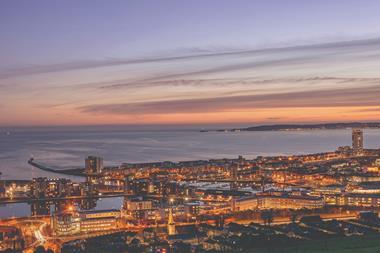Look back at the economic commentary, predictions and analysis printed on these pages over the past 10 years and one of the recurring themes is that of uncertainty.

Whether in reference to the global financial crisis, the EU referendum or elections in the UK, US or across Europe, the property industry is obsessed with the causes and, more importantly, effects of uncertainty. This is hardly surprising. Operating in the unknown often leads to delayed investment decisions and the start of a downward spiral in the market.
With Mark Carney suggesting that the impact of a no-deal Brexit could be as far reaching as the financial crisis of 2008, and warning that house prices could plummet by as much as a third over three years, clarity and confidence seem like a luxury we do not and will not have for some time.
Find out more - Lehman Brothers a decade on
When uncertainty becomes the norm – as it seems to have become during this past decade in international property markets – a new approach is required. As investors, we must focus on resilience, looking for investments that stand the test of time regardless of the political or economic situation. Simply relying on the wider market to go up has never been a wise strategy; now, hiring entrepreneurial individuals, backing adaptable and experienced people and seeking out assets that will perform strongly even if the market deteriorates have become even more crucial.
Analysing opportunities in terms of their property fundamentals has never been so important. The ability to access off-market opportunities, to understand how an asset could be maximised to create value and to ensure that the price is right are all key to building a resilient portfolio.
Focusing on creative, unique propositions is one way to ensure strong performance independent of market conditions.
“When uncertainty becomes the norm a new approach is required”
Uniqueness might come through a differentiated product or service offer. In the US, we have backed The St James, which is creating complexes offering a combination of sports and wellness venues and programming, lifestyle amenities and family-centred active entertainment experiences.
The first such complex opened last weekend outside Washington DC and a second site has been approved in Chicago; our Mortimer House investment is a unique fusion of co-working space, a restaurant and a private members’ club in an art deco building; while AllBright provides a club, a networking platform and a digital academy to support female entrepreneurs.
Another effective strategy is to target distinctive and rare assets – for example, our Islington Square development is a singular opportunity to create a new major mixed-use scheme incorporating heritage buildings fronting Upper Street. We have also invested in iconic hotel assets including, most recently, the Waldorf Astoria Beverly Hills and the Beverly Hilton.

With political and wider economic factors likely to affect international capital flows, focusing on projects designed and priced to appeal to their local markets is also a wise move.
Our projects with Galliard in areas such as Clapham and Colindale have been successful by creating a high-quality product at a price point suited to local buyers rather than relying on wealthy international investors paying premium prices.
As Warren Buffett once said, “only when the tide goes out do you discover who has been swimming naked”. At certain points in the cycle – as we saw in the lead-up to 2008, before Lehman’s collapse ushered in a decade of uncertainty – investors sometimes do not have to do much to make money from property. But when times are tough and markets are less predictable, experience, strategic investment decisions and asset management skills become far more valuable.
Jonathan Goldstein is chief executive of Cain International





























No comments yet